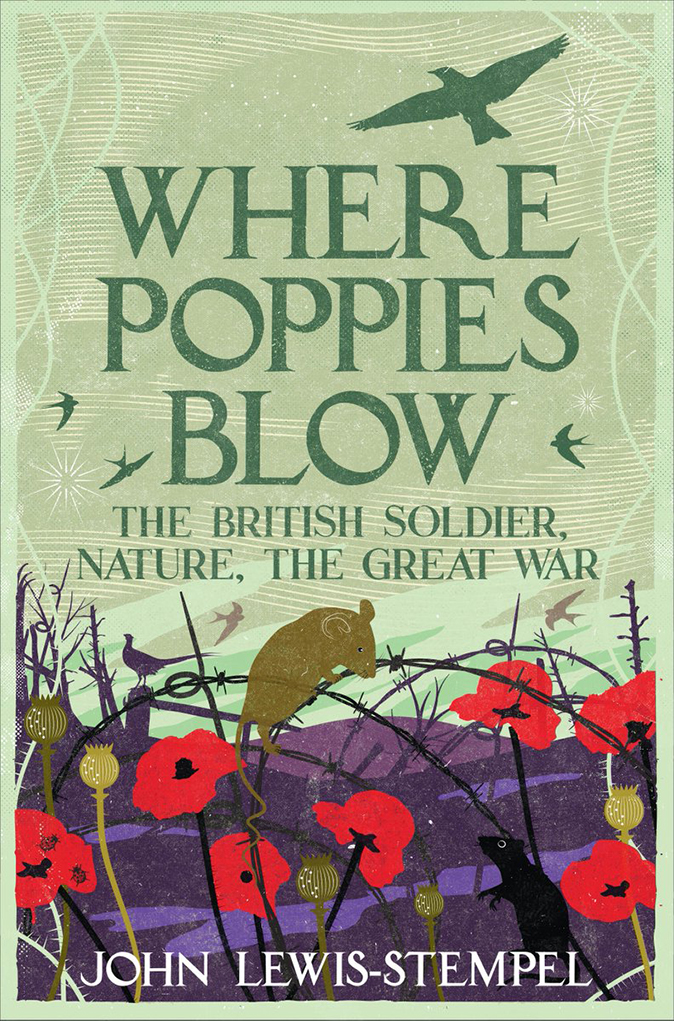Book of the week: Where Poppies Blow
Clive Aslet enjoys this moving account of how First World War soldiers found hope through their connection with Nature.

Where Poppies Blow John Lewis-Stempel (Weidenfeld & Nicolson, £20)
There have been so many books on the First World War since the centenary started that one would have thought the subject was published out. Not so. Where Poppies Blow makes an important contribution to the literature by studying the British soldiers’ relationship with Nature. Today, most ordinary people don’t know much about farming, landscape, the horse or wildlife in all its forms. That wasn’t the case in 1914.
The poet Edward Thomas may have been born in Lambeth, but he was one of many who identified with, in John Lewis-Stempel’s words, King and Countryside. Their life in the trenches of the Western Front— muddy, primitive, rat-infested—reduced them to a condition little different from wild animals. We know the horror, but there could be moments of wonder in it, too.
This book provides a different vantage point from that of the recognised War Poets, whose attitudes weren’t always those of their generation as a whole. It’s written from the letters, diaries and memoirs of a wide range of participants, generally unknown to history, and interspersed with amateur verse. There is rage, of course—particularly at the fate of horses.
‘Oh! My beloved animals,’ cried Sir Edward Elgar of the Hampstead Volunteer Reserve in 1916 and his sentiment was echoed on the battlefield by the driver who fell to his knees when the horse pulling his ammunition wagon was killed; all he could say in response to the Brigadier’s ‘Never mind, sonny’ was ‘Bloody Germans’. Maj-Gen Jack Seely recalled that ‘one of the finest things about the English soldier of the front line was his invariable kindness and, indeed, gentleness at all times to the horses’.
Skylarks sang above the downland of the Somme. This was just one of the species that Capt Patrick Chubb, writing for British Birds, found unaffected by shellfire. Others were the house sparrow, swallow, house martin, chaffinch, yellowhammer, willow wren, magpie, kestrel and wood pigeon. The birders of those days were an unsentimental breed, who thought nothing of shooting birds to identify them (one officer carried a small-bore shotgun disguised as a walking stick for the purpose) or collecting their eggs.
The birds sometimes thrived in battlefield conditions. Unburied corpses fed carrion-eaters and generated huge numbers of flies: Ford Madox Ford describes the hero of Parade’s End being mobbed by swallows when he walks through waist-high thistles ‘after a famous victory’.
Exquisite houses, the beauty of Nature, and how to get the most from your life, straight to your inbox.
A book that the author doesn’t mention is Observations and Reflections on Wild Creatures (1923), written by G. T .K. Maurice from his experiences on the Salonika front; it reveals that a vulture, although unable to penetrate a uniform, can pick the skeleton inside it clean by penetrating the body cavity via the thorax. Evolution made them bald for a reason.
Animals could be eaten, hunted or adopted as pets. Omnipresent lice made less welcome companions, but other insects attracted study: two ‘Ants from the Front’ were exhibited at the South London Entomological Society in February 1915. Even the Western Front had its quiet spots, one corporal being fed up with the ‘thousands of frogs’ around Ruminghem, whose ‘croaking noise... is just awful’.
In the least promising conditions, men showed their faith in the future by planting gardens. This moving, strangely life-affirming book describes how the poppy became the symbol of the war, its meaning reinforced by numerous cultural memories. We now know that its seeds remain viable for many decades. Could any of the poppies that bloom next spring have grown from seeds shed during the conflict?